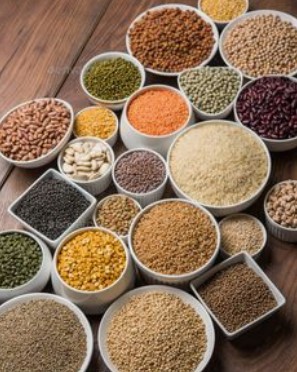Introduction:
Whole grains are nutritional powerhouses packed with fiber, vitamins, minerals, and antioxidants that provide numerous health benefits. From supporting heart health and digestion to reducing the risk of chronic diseases, incorporating whole grains into your diet can have a profound impact on your overall well-being. In this article, we’ll explore the benefits of whole grains, highlight some of the most nutritious options, and provide practical tips for incorporating them into your meals to harness their full potential.
The Benefits of Whole Grains:
Whole grains are grains that contain all three parts of the grain kernel – the bran, germ, and endosperm – in their natural proportions. Unlike refined grains, which have been stripped of these nutrient-rich components during processing, whole grains retain their fiber, vitamins, minerals, and phytonutrients, making them a healthier choice. Some of the key benefits of whole grains include:
- Heart Health: Whole grains, such as oats, barley, and brown rice, are rich in soluble fiber, which helps lower cholesterol levels and reduce the risk of heart disease.
- Digestive Health: The fiber found in whole grains promotes healthy digestion and regular bowel movements, reducing the risk of constipation and other digestive issues.
- Weight Management: Whole grains are more filling and satisfying than refined grains, helping to curb appetite and promote weight management.
- Blood Sugar Control: The fiber and complex carbohydrates in whole grains help stabilize blood sugar levels, reducing the risk of insulin resistance and type 2 diabetes.
- Nutrient Density: Whole grains are rich in vitamins, minerals, and antioxidants that support overall health and well-being, including B vitamins, iron, magnesium, and selenium.

Nutritious Whole Grain Options:
- Oats: Oats are a versatile and nutritious whole grain that can be enjoyed in various forms, including oatmeal, overnight oats, and oat flour. They are rich in soluble fiber, which helps lower cholesterol levels and promote heart health.
- Quinoa: Quinoa is a complete protein source and contains all nine essential amino acids, making it an excellent choice for vegetarians and vegans. It’s also rich in fiber, vitamins, and minerals, including iron, magnesium, and zinc.
- Brown Rice: Brown rice is a whole grain alternative to white rice and is rich in fiber, vitamins, and minerals. It’s a great source of energy and can be enjoyed as a side dish, in stir-fries, or as a base for grain bowls.
- Barley: Barley is a hearty whole grain that’s rich in fiber, vitamins, and minerals, including beta-glucan, a type of soluble fiber that helps lower cholesterol levels and promote heart health.
- Whole Wheat: Whole wheat is a staple whole grain that’s rich in fiber, vitamins, and minerals. It can be enjoyed in various forms, including whole wheat bread, pasta, and flour, and provides sustained energy and nutrition.
Practical Tips for Incorporating Whole Grains:
- Start your day with a bowl of oatmeal topped with fresh fruit and nuts for a nutritious breakfast.
- Swap refined grains for whole grains in your meals, such as choosing whole wheat bread instead of white bread or brown rice instead of white rice.
- Experiment with different whole grains in your cooking, such as quinoa, barley, farro, or bulgur, to add variety and nutrition to your meals.
- Incorporate whole grains into snacks and side dishes, such as popcorn, whole grain crackers, or a quinoa salad.
- Read labels carefully when purchasing packaged foods to ensure they contain whole grains and avoid products with refined grains or added sugars.
Conclusion:
Whole grains are nutritional powerhouses that provide numerous health benefits, including supporting heart health, digestion, weight management, and blood sugar control. By incorporating a variety of whole grains into your diet and following practical tips for incorporating them into your meals, you can harness the power of whole grains to optimize your health and well-being. Whether you’re enjoying a bowl of oatmeal for breakfast, a quinoa salad for lunch, or whole wheat pasta for dinner, embracing whole grain wonders can help you achieve your health and nutrition goals and live a healthier, happier life.
- A List Of Healthy Foods To Eat!Listing a list of valuable foods isn’t as simple as you might think. There are so many great foods on this planet that can expand your reach … Read more
- Healthy Food Helps You Burn Fat!There is no doubt that the use of fats is linked to the consumption of a correct diet. Exercising in one spot on the tree for a … Read more
- Healthy Foods Can Help You With Your Weight Loss Goals!You might likewise be wondering what makes them great food sources? The main importance of good food is green plant foods and regular varieties. I also call … Read more
- Healthy Foods for Women!Eating well is essential for good prosperity. Women have luxurious expressive purposes that are unique to men. There is a great failure to defend the artificial and … Read more
- How Important Are Mobile Ambulances to the Primary Health Care!Show An emergency vehicle is a means of transporting seriously ill or injured people from one point to another, many of them to medical clinics. Previously, ambulances … Read more